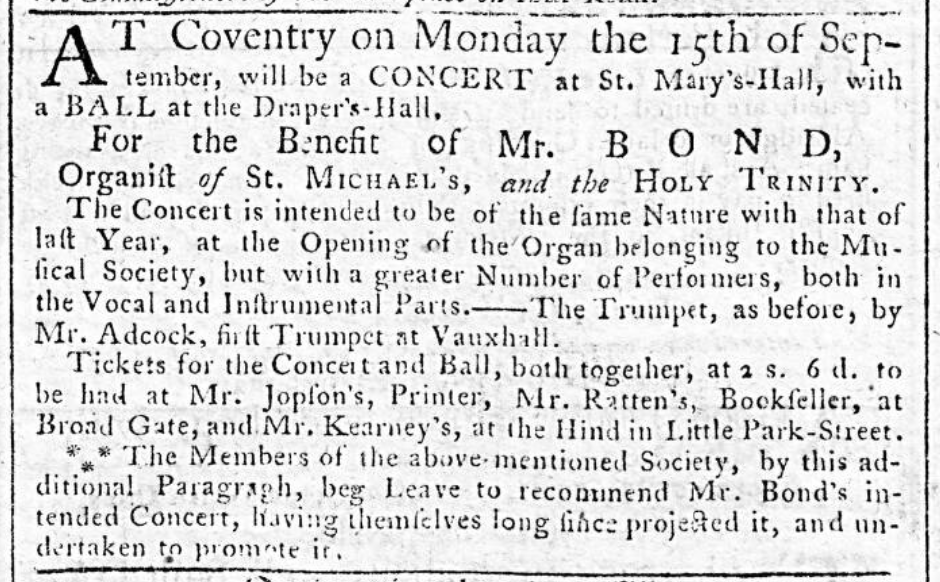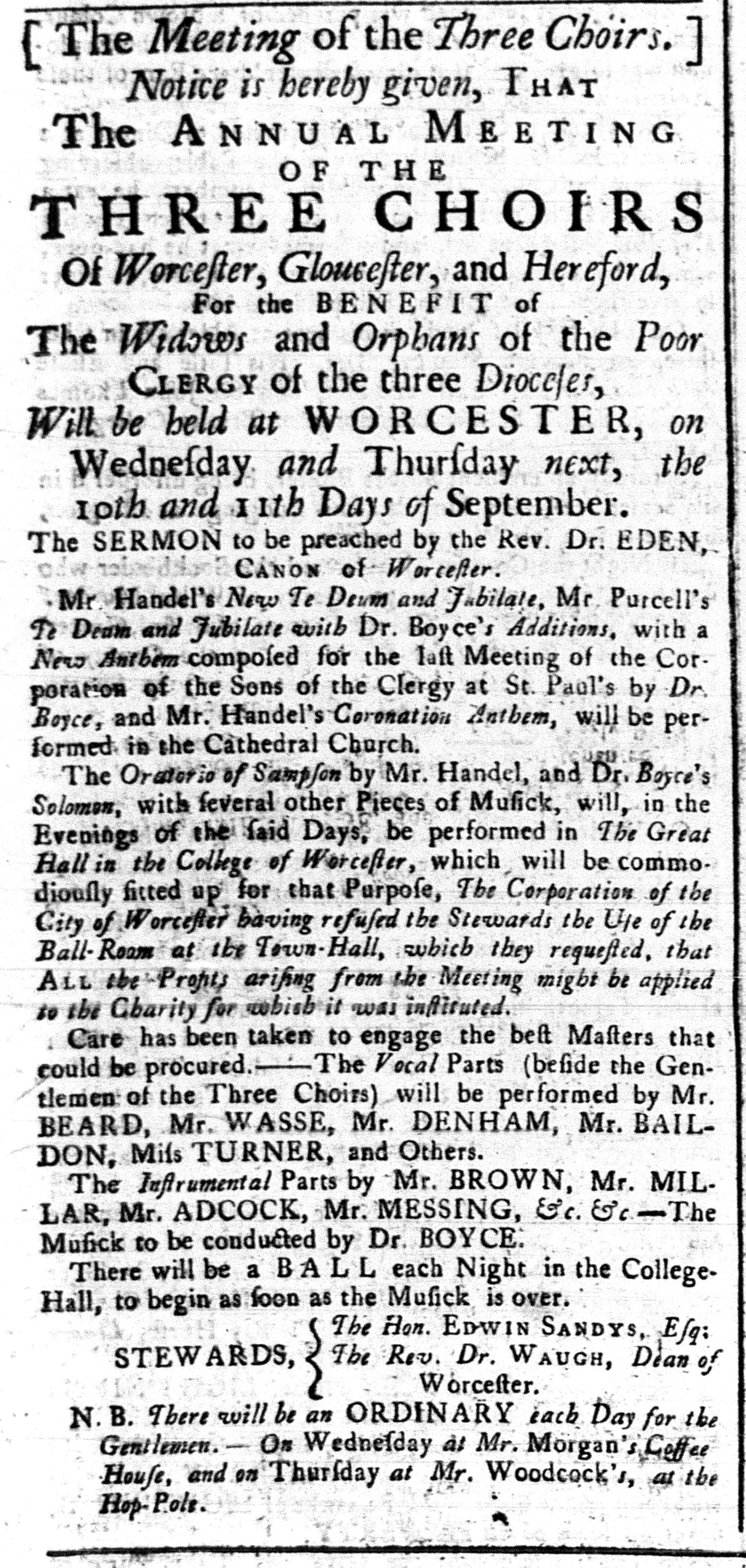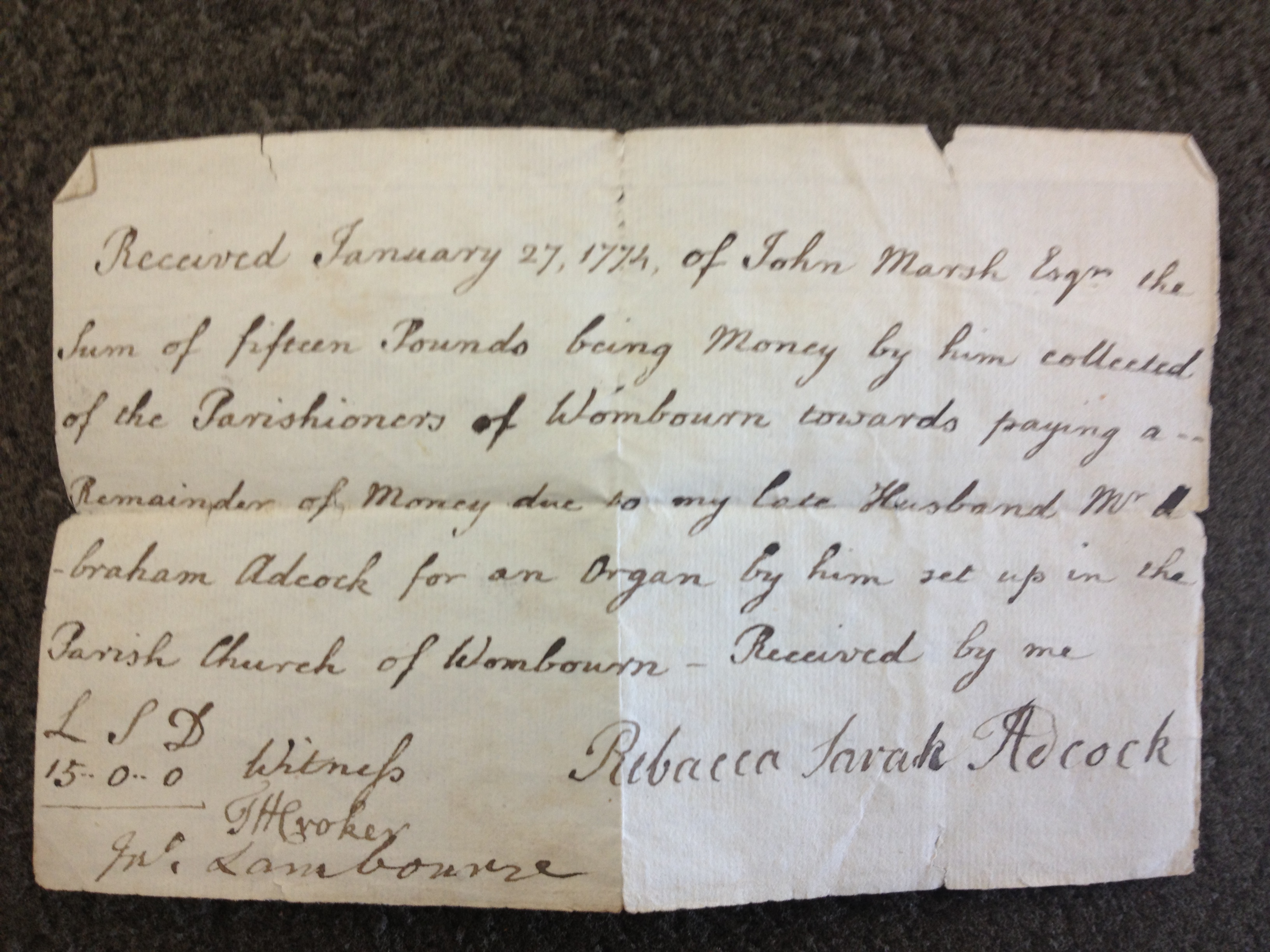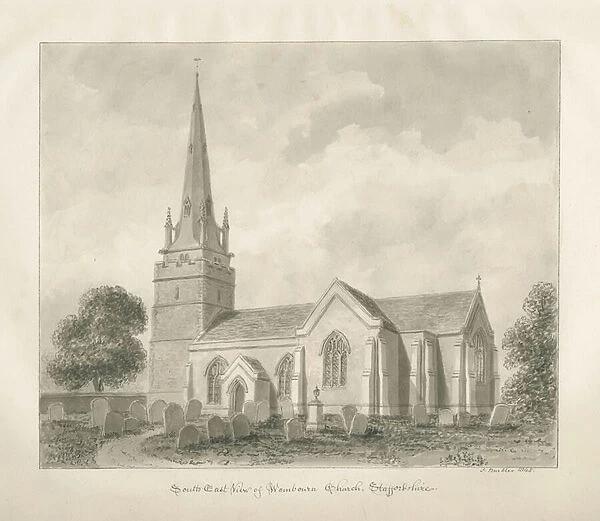An Organ for Wombourne Church
Sir Samuel had built a Music Room in the gardens at The Woodhouse around 1760 and some time thereafter an organ built by Abraham Adcock had been installed.[1] Adcock was principally known as a trumpeter, and it is likely his organ-building business was helped considerably by his standing as a performer and as the preferred trumpeter of George Frederic Handel. Adcock took part in the first Foundling Hospital benefit concerts under the direction of Handel from at least 1754 and probably from its inception in 1749.[2] In 1755 he appeared at the Three Choirs meeting at Worcester and was a regular visitor to this festival and others in the region.[3] Coventry organist Capel Bond engaged him for his annual benefit concerts, listing him in the adverts variously as ‘The Trumpet by Mr. Adcock from London’ Monday, 20th September 1756 (an advert where Adcock’s name is in larger typeface than Bond’s).[4

It is likely that Sir Samuel first encountered Adcock during his years of study at Exeter College, Oxford, when he appeared at the Holywell Music Room such as the performances of Messiah and Esther on 6th and 7th July 1757.[5] The trumpeter performed even closer to the Hellier estates in 1758 when he appeared at a Stourbridge Musical Society concert directed by organist Francis Lewis on 19th September 1758 in a concert which promised ‘the most celebrated Pieces by Mr. Handel, &c. … The First Trumpet by Mr Adcock from London.’[6]
In 1760, Adcock loaned a ‘little organ’ to St John’s church, Wolverhampton for the period 1760–2, charging ten pounds.[7] Sir Samuel must have seen this organ at St John’s, and this may have strengthened his resolve to commission Adcock to build an organ for his own Music Room, which was built around the same time. Indeed, it may well have been the case that Sir Samuel bought this very instrument, and it was transported from Wolverhampton to The Woodhouse once St John’s had finished with it.
It is unclear at what point Sir Samuel first arrived at the idea of commissioning a larger instrument for Wombourne Parish Church, but the letter to Thomas Hatrell of 1st August 1763 (‘I think to lay before you two or Three Scheems of mine‘), may refer to this. Sir Samuel may have got the idea to ask Adcock to both build an organ and play the trumpet for from a series of annual Music Meetings in Church Langton, Leicestershire, which Rev. William Hanbury started in 1759. Adcock had been consulted on the Church Langton performances (‘Mr. Adcock, a person well skilled in those things, says the church will contain near 2000 people’),[8] and agreed to build an organ for the church in time for the first festival.[9]
In the first letters Sir Samuel wrote to John Rogers his plans for a new organ for Wombourne church feature heavily: he reported back on how the organ was progressing and instructed Rogers in obtaining the necessary Faculty for erecting an organ in the church.


[1] Barre. p 326. Evidence comes in the form of a bill from Timmins for various woodworking, including ’27 Dec 1760 to 1 sash in the Music Room’.
[2] no accounts survive for the first five years.
[3] Aris’s Birmingham Gazette, Monday, 8th September 1755.
[4] Aris’s Birmingham Gazette, Monday, 30th August 1756.
[5] Oxford Journal, Saturday, 2nd July 1757.
[6] Aris’s Birmingham Gazette, Monday, 9th October 1758.
[7] Extracts from Copy of Chapel-Wardens’ Accounts Dating from 1760 D/SSR/44/287
[8] Hanbury, in The History of the Rise and Progress describes the dinner after the performance where ‘Adcock also sounded droll tuned upon his trumpet, in the show way, &c. which occasioned much laughter and merriment…’ p 85.
[9] Although no stops of the original instrument survive at Church Langton, Adcock’s original keyboard survives, and this is thought to be the only example of his work in existence. National Pipe Organ Registry, organ no. N04600.
